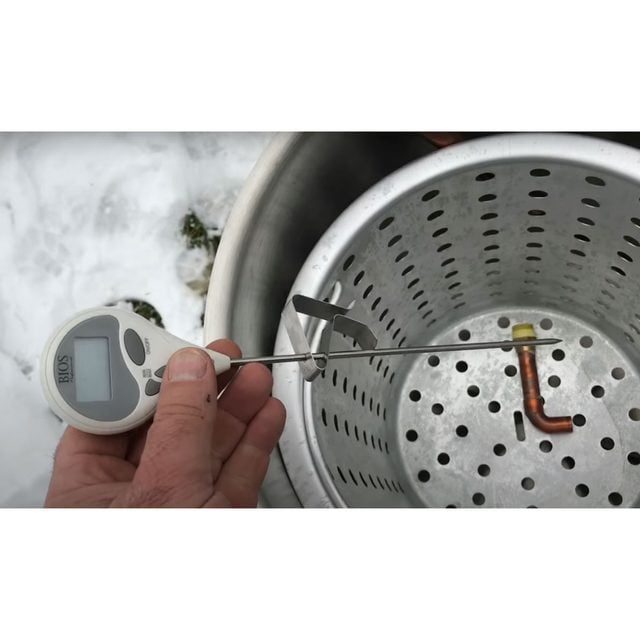Never used an outdoor deep fryer before? Want to start safely? Read this guide to learn all about how to use an outdoor deep fryer for the first time.
Introduction
Outdoor deep fryers bring the pleasure of fast foods to your home. They're great for cooking fries, fish, chicken, shrimp, turkeys and many other foods that taste great when they're deep-fried and crispy. Trouble is, outdoor deep frying can seem scary if you've never done it before. Learn all about outdoor deep frying, and how you can do it safely and confidently, even if you're doing it for the first time. The photos show deep frying a turkey, but don't worry if you prefer something smaller for your first fry. The principles you'll get here apply to all deep-fried foods.
Tools Required
- Deep frying pot and basket
- Deep frying thermometer
- Drying rack and baking tray
- Elbow-length work gloves
- Outdoor deep fryer
- Safety glasses
- Small outdoor table (optional)
- Wand lighter or handheld propane torch
Materials Required
- 20-lb propane tank
- Five to 25 quarts of cooking oil
Project step-by-step (6)
Set Up the Fryer
- Choose an open area free of flammable materials to set up your outdoor deep fryer.
- Driveways are ideal, because spilled oil won’t be as big a deal there as on your lawn.
- Make sure the burner is level and fully supported.
- Thread the regulator of your fryer carefully onto the valve of your 20-lb. propane tank. Make sure it’s tight and fits properly.
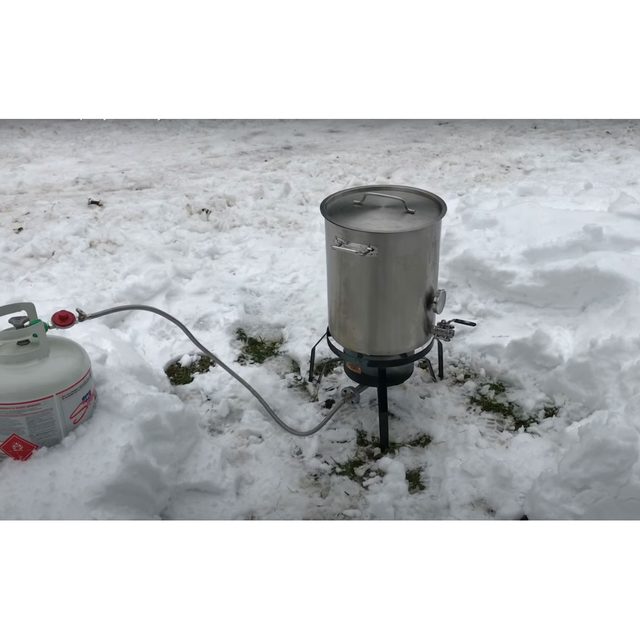
Prepare the Food and Oil
- Take the frying basket out of the pot and set it to one side. Having an outdoor table nearby helps.
- Add the food you’ll be cooking to the frying basket, filling it only about two-thirds of the way. Keep the basket out of the oil for now.
- Fill the pot with cooking oil, dispensing enough to completely submerge your food, but no more.
- Peanut oil is generally regarded as the best for deep frying, although canola oil is cheaper and more widely available.
- Make sure any large items are fully thawed before deep frying. Frozen foods can cause oil to splash out of the pot suddenly.
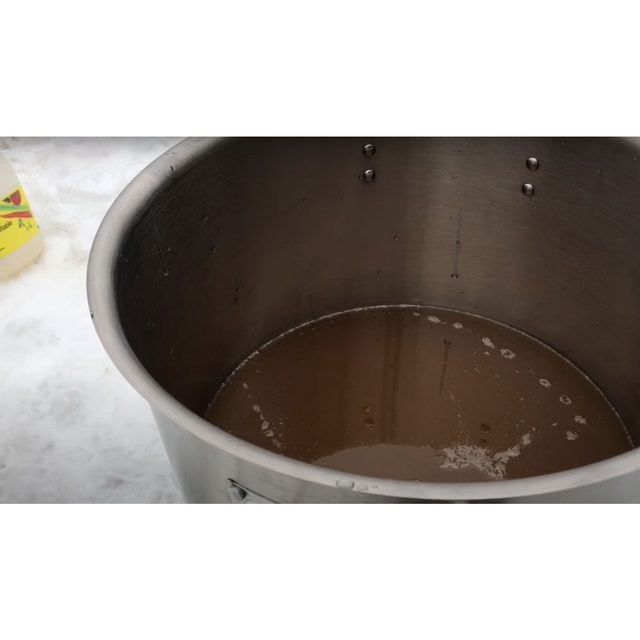
Light the Burner and Heat the Oil
- Turn your propane tank’s gas valve all the way on, then use a lighter wand, long match or small propane torch to light the burner.
- Shut off the gas and let it dissipate for a couple of minutes if the burner doesn’t light right away. Then turn on the gas and try again.
- Place your pot of oil on the burner, then monitor the temperature closely with the built-in thermometer (if your fryer has one) or a stainless steel probe thermometer. If you use a probe thermometer, be sure to put on thick work gloves before inserting it in the oil.
- Although most people don’t wear safety glasses while deep frying, it’s a wise safety precaution.
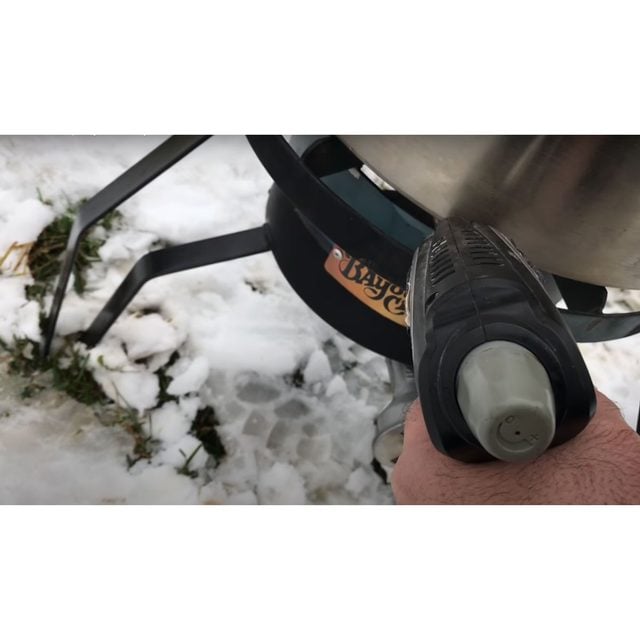
Place Food In the Heated Oil
- With the oil heated to 400 degrees F, lower your frying basket of food slowly and carefully into the hot oil, making sure your gloves are on first.
- The rate at which you lower the food should be related to how much it boils as it lowers. Dunking the food completely and quickly can cause splattering of hot oil as it froths up. Take your time.
- With the food submerged, close the lid of your pot, if it has one, to reduce the amount of energy consumed.
- With the food bubbling away and the burner still on, wait for the magic to happen. Check fries, fish fillets, chicken nuggets and other small foods after the recommended cooking time by carefully pulling the basket out of the hot oil. Thawed turkeys take 30 to 60 minutes to fully cook, depending on size.
- Oil temperature will drop after adding food, but will rise again while cooking. Keep your eye on the temperature of the oil and reduce the flame if oil temperature exceeds 400 F. Ideal outdoor deep frying temperature is between 375 F and 400 F.
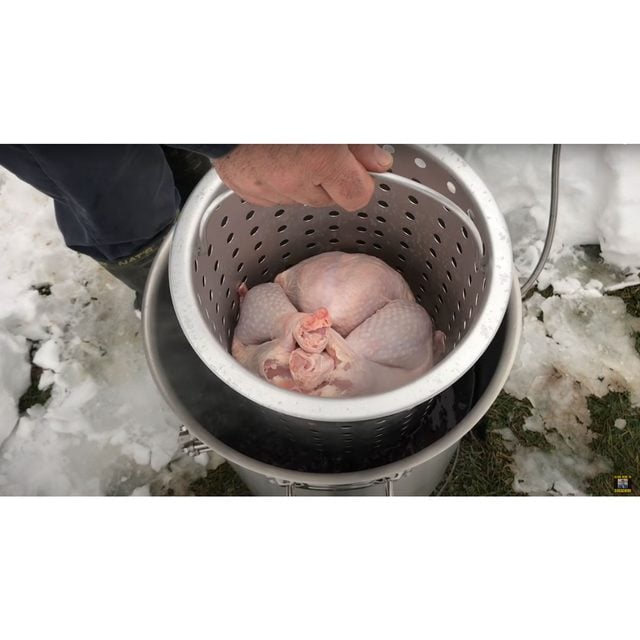
Remove Food When Cooked
- Lift the cooking basket completely free of the oil when the food is golden brown and looks crispy on the outside.
- Lay the cooked food on a drying rack with a baking sheet under it.
- Let it drip-dry and cool for several minutes before serving.
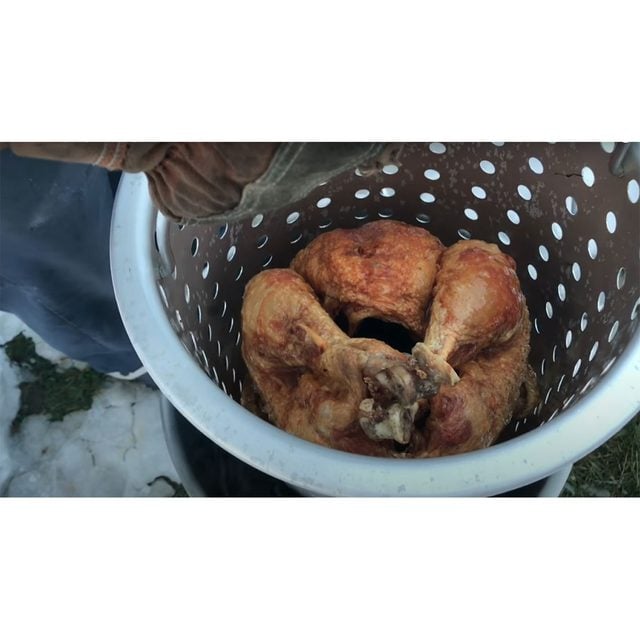
Shut Down and Clean the Fryer
- Shut off the gas flow to your fryer when you’re done cooking, and make sure the valve on your propane tank is all the way off.
- Double check that the burner has no flame.
- Allow the fryer and oil to cool completely. Double check that it’s cool with your thermometer.
- This will take many hours, so keep people and pets safely away from the pot while cooling happens.
- Carefully pour the completely cool oil into a clean container.
- The jug it came in works well. If your fryer has a drain valve at the bottom of the pot, use it. If not, carefully lift the pot and pour the oil into the jug for reuse. A food-grade funnel makes this easier.
- Soak and wash the pot and frying basket with hot water and dish soap, then put it and the oil away, ready for your next cookout.
- You can reuse the oil three or four times. After that, dispose of it as waste in a sealed container or find a restaurant that will accept your used oil for recycling along with their own.
